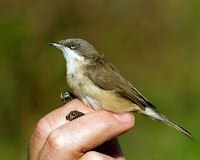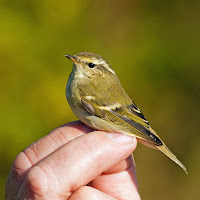The wave of crests and other ''Sibes'' filling the skies of the British Isles will not have gone unnoticed this autumn with most if not all coastal observatories reporting higher than average numbers of Goldcrests, Firecrests, Yellow-browed Warblers and other delights from the east landing in their nets.
In 2014 we achieved an annual total of 76 Goldcrests which was a record for our site at Stanford Reservoir. In that year we had ringed only 9 before the beginning of October but there are signs that the local crests have had a productive breeding season in 2015. 34 juveniles were ringed before the beginning of October which boosted our total of this species so early in the season it was hard not to notice the sudden increase.
By the time we have equalled our previous years record it was only the first day of October and we knew that those arriving from the north would soon be here.
Although we never catch numbers in the hundreds like the observatories experience, we did receive a steady flow of crests with the biggest catch being 19 on the 20th October which was joined by the second Firecrest of the year after the first was ringed on the 9th.
As we approached a landmark total of 7000 new birds ringed for 2015 it was only fitting that this would turn out to be a Goldcrest in what could be the best autumn migration movement of this species seen for a long time and currently ringed 191 so far this year.
Of course we couldn't miss out on some other ''Eastern Delights'' of our own could we?
On the 12th October we ringed a Yellow-browed Warbler, the second for Stanford after a 5 year wait and the last bird of the same day also saw an 'Eastern Lesser Whitethroat' ringed.
We eagerly await the results of a DNA test and hope to provide some answers to the questions raised of this ones origin.
 |
| 7000th bird for 2015 |
 |
| 'Eastern' Lesser Whitethroat? |
 |
| Yellow-browed Warbler |
